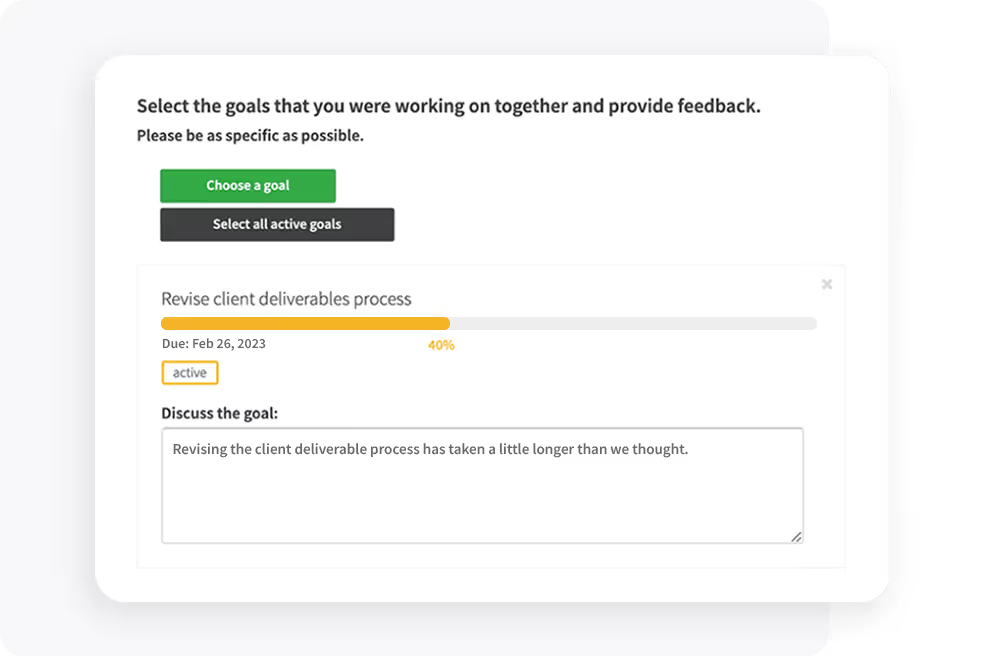Free OKR Template & Examples for Goals, Planning, Reporting
Setting clear and achievable goals is essential for any organization. It helps align teams, measure progress, and maintain a competitive edge. Using OKRs, or Objectives and Key Results, is a practical goal-setting framework to support these ends.
In this article, we explore the significance of OKR templates, their benefits, and how they can transform the way your organization sets and reaches its goals.
What is an OKR Template
An OKR template is a structured document or tool that helps organizations define, track, and manage their goals effectively. It simplifies the goal-setting process by providing a clear framework. It articulates two main aspects of your team's goals: what you want to achieve (Objectives) and how you will measure success (Key Results).
The template typically begins with the Objective. This is a qualitative statement that outlines a significant goal. This objective should be ambitious and aligned with the broader strategic aims of the organization.
Following the Objective, the template includes Key Results. These are specific, measurable outcomes that indicate progress toward the Objective. Each Objective usually has 3 to 5 Key Results. They should be quantitative and time-bound, providing clear criteria for success.
For example, Key Results for "Improve customer satisfaction" might include: "Achieve a 90% customer satisfaction score" or "Reduce support response time to under 24 hours."
How to Effectively Use an OKR Template
Effectively using an OKR template involves more than just filling in the blanks. It requires strategic thinking, collaboration, and ongoing management. Here’s a step-by-step guide to help you get started and maximize the benefits of your OKR template:
- Understand the Basics of OKRs - Ensure you have a solid understanding of the KPI and OKR framework. Know the difference between Objectives and Key Results, and familiarize yourself with best practices.
- Align with Organizational Goals - Start by aligning your team’s objectives with the broader organizational goals. This ensures that everyone is working towards the same overarching targets and the company’s strategic vision.
- Define Clear Objectives - Make sure your objectives are clear, concise, and ambitious. Objectives should provide a compelling direction for your team.
- Set Measurable Key Results - Identify 3 to 5 key results for each objective. These should be specific, measurable, and time-bound outcomes that indicate progress toward achieving the objective. Ensure that these key results are realistic yet challenging.

- Collaborate with Your Team - Engage your team in the OKR setting process. Collaboration ensures that everyone has a say in the goals and is committed to achieving them. This also helps gain different perspectives and insights.
- Regular Check-Ins - A well-designed OKR template also facilitates regular check-ins and updates. It promotes transparency and accountability by making goals visible to everyone in the organization. Use these sessions to discuss what’s working and what’s not and to make any necessary adjustments.
- Document and Share Progress - Use your OKR template to document progress regularly. Sharing updates with the team fosters transparency. It helps everyone see how their work impacts our goals.
- Celebrate Achievements - Recognize and celebrate when key results are achieved. Celebrating successes boosts morale and encourages continued effort and engagement from the team.
Advantages of Using an OKR Template
Using an OKR template can significantly enhance the effectiveness of your goal-setting and performance-management processes. OKR templates ensure goals are clear, progress is tracked, and teams align with the organization's vision. Here are some of the key advantages of using an OKR template:
- Clarity and Focus - These templates help articulate clear and concise objectives. They ensure that everyone understands what needs to be achieved. This clarity helps teams stay focused on their goals and reduces unwanted distractions.
- Measurable Progress - By defining specific and quantifiable key results, OKR templates make it easier to measure progress. This allows teams to track their achievements over time and make data-driven decisions to stay on course.
- Alignment and Coordination - OKR templates facilitate alignment across different levels of the organization. They link individual, team, and organizational goals. This ensures everyone is working towards the same objectives.
- Transparency and Accountability - Documenting and sharing OKRs fosters a culture of transparency and accountability. Team members can see each other's goals and progress to encourage mutual support and accountability.
- Flexibility and Adaptability - OKR templates are designed to be dynamic, allowing for regular updates and adjustments. This flexibility ensures that goals remain relevant and attainable.
Click here to download our free OKR Template PDF.
Other Ways to Enhance an OKR Template
When creating your OKR Template, many aspects of refining and tuning it can be difficult. Additionally, doing all of the data allocation for what needs to be improved is difficult too. This is where performance management software comes in.
PerformYard is robust performance management software that enhances the implementation and management of OKR templates. The platform lets users easily customize OKR templates to align with goals, ensuring team members direct effort accordingly. PerformYard’s easy interface also fosters regular check-ins and progress tracking.
By leveraging PerformYard, organizations can enhance their goal-setting processes, improve transparency, and drive better alignment across teams.



.jpg)

